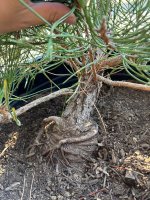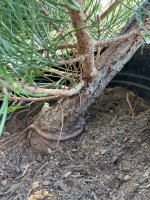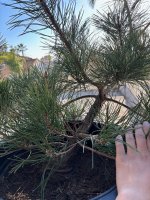zeejet
Mame
I recently obtained a field-grown black pine (15 gallon) with what looked like a solid base, but further below is a massively swollen and fused rootball. I didn't want to dig that deep at the nursery so took a gamble - it was only 70 bucks.
Is this still suitable material? If not, can it be salvaged (e.g. ground layered)? Or should I pass on it (give it away or donate to my club)?



Is this still suitable material? If not, can it be salvaged (e.g. ground layered)? Or should I pass on it (give it away or donate to my club)?




